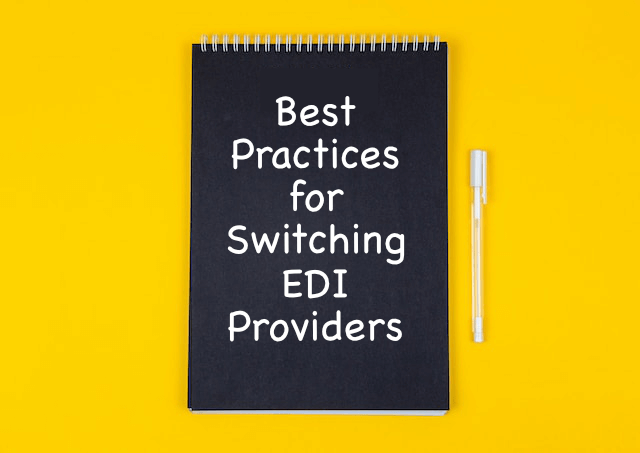Best Practices for Switching EDI Providers
Do any of the following characteristics describe or relate to your current EDI service provider: poor service, lengthy setups, increasing costs, invoices failing?
If the answer is yes, then it is time that you considered switching your current EDI provider to another provider.
Switching Electronic Data Interchange (EDI) providers can be a daunting process that requires careful planning and execution to ensure a smooth transition. Here are some best practices to consider when switching EDI providers:
- Assess your current EDI requirements and identify the features and services you need from a new provider.
- Document your existing EDI processes, workflows, and configurations to understand what needs to be migrated.
- Define clear objectives for switching providers, such as cost savings, improved efficiency, or additional functionality.
- Research and compare different EDI providers based on their capabilities, pricing, customer support, and industry reputation.
- Choose a provider that can scale with your business, accommodating future growth and increasing transaction volumes.
- Work closely with the new provider to map your existing data formats to their system requirements.
- Validate data accuracy during the migration process to avoid errors in the new system.
- Conduct extensive testing of data exchange processes to ensure seamless transmission and reception of EDI documents.
- Inform your trading partners well in advance about the switch, providing them with necessary contact information and testing schedules.
- Coordinate testing with trading partners to ensure that data interchange works smoothly between systems.
- Train your internal staff on the new EDI system to ensure they understand the new processes and can troubleshoot issues.
- Establish a support system to address any issues or questions that arise during and after the transition.
- Ensure that the new EDI provider complies with industry standards and regulations relevant to your business.
- Verify the security measures in place, including encryption, authentication, and data backup, to protect sensitive information.
- Create backups of all EDI data before the migration to avoid data loss.
- Develop a contingency plan in case of unexpected issues, outlining steps to revert to the previous provider or address any critical problem.
- After the migration, conduct a thorough review of the new system’s performance and optimize processes for efficiency.
- Collect feedback from internal teams, trading partners, and customers to identify any issues and address them promptly.
- Document the new EDI processes, configurations, and contact information for future reference and troubleshooting.
By following these best practices and paying careful attention to the details, you can minimize disruptions and ensure a successful switch to a new EDI provider. Celtrino use their 30+ years experience of working with EDI to make the process seamless for you and your organisation. Contact us today.


